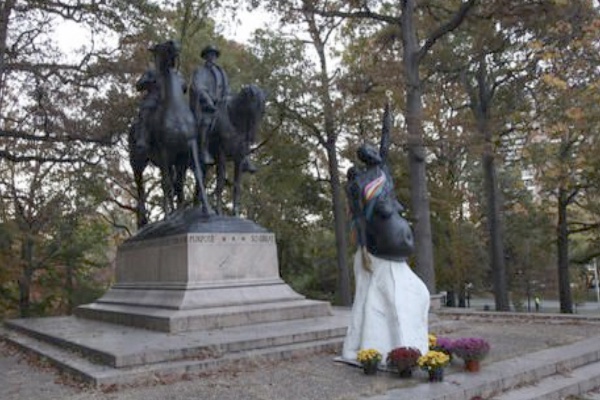More cities are considering removing Confederate memorials

Battle of Liberty Place monument (New Orleans)
Related Link: Racist Symbols: Latest Developments
Baltimore is joining a number of cities and states across the country that are reevaluating the monuments dedicated to the Confederacy. The debate comes after this summer’s horrific murders, by a white supremacist, of nine innocent black men and women at the AfricanAmerican Emanuel AME Church in Charleston, South Carolina. The incident coincides with a series of videotaped incidents of police brutality, which has forced Americans to reconsider the sub currents of racism. For some, this sub current is embodied in the numerous monuments and historical paraphernalia that commemorate the Confederate States of America. The monuments in question by the special commission in Baltimore currently include the LeeJackson monument in Wyman Park Dell, a particularly offensive monument for some. The monument is where Confederate reenactors each January celebrate LeeJackson Day, which coincides within a day of Martin Luther King Jr. Day.
This week Baltimore is holding a meeting to decide what to do with its Confederate monuments. The question on the table is whether the city will follow in the footsteps of other Southern communities, which have decided to take action. Most recently, New Orleans has joined the fight to remove these kinds of monuments. Rather than create a special commission like Baltimore to determine where the line should be drawn between history and offensive artifacts, Mayor Mitch Landrieu called for the removal himself. In June, Landrieu identified four monuments for removal: statues of Gen. Robert E. Lee, Gen. P.G.T. Beauregard, President Jefferson Davis, and a monument erected by the White League in memory of a rebellion against Louisiana’s biracial Reconstruction government.
Last Thursday, for nearly four hours in New Orleans a crowd argued amid insults over the same discussion happening in Baltimore, whether monuments to Confederates, who were white supremacists and supported the defense of slavery, have a place in American cities today. The discussion ultimately yielded little progress beyond two opposing petitions: One to protect the monuments drew 31,000 signatures, and the other, a petition backed by the Landrieu administration to remove them, drew 4,500.
New Orleans, which has a similar demographic profile to Baltimore, is over 60 percent black. These petitions show the strength that “southern heritage” still retains.
In Birmingham an old statue of Nathan Bedford Forrest is being considered for removal along with a number of other Confederate monuments. The proposal is to relocate these monuments to more discreet locations such as cemeteries and museums.

In some places new monuments reflecting a modern sensibility have been placed in front of the controversial monuments. This one created by Pablo Machioli was erected in front of Baltimore’s LeeJackson monument in New Orleans in October. It was quickly removed to an off-site location.